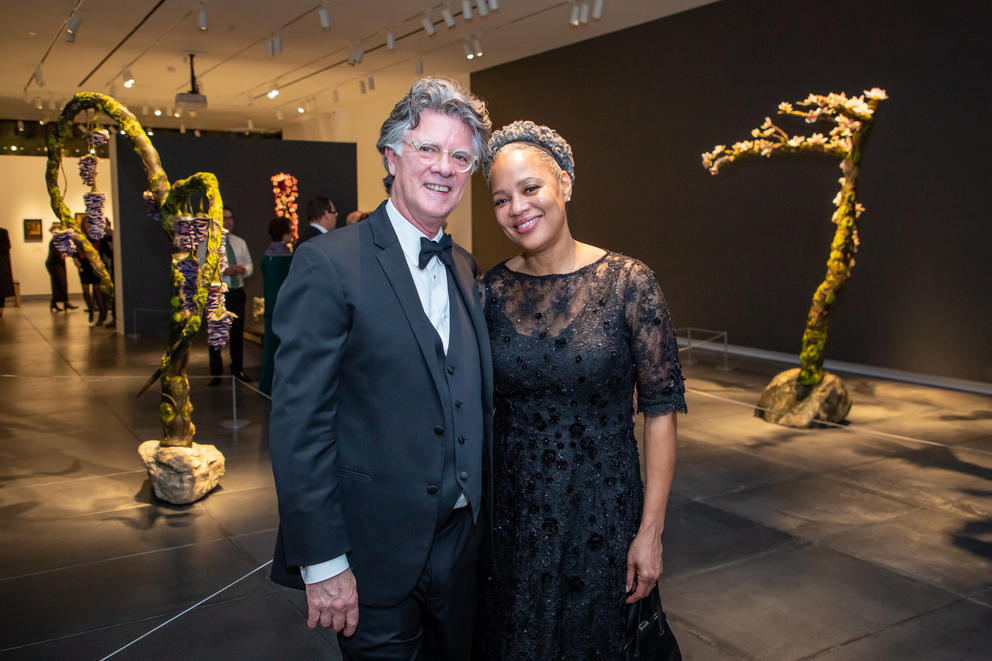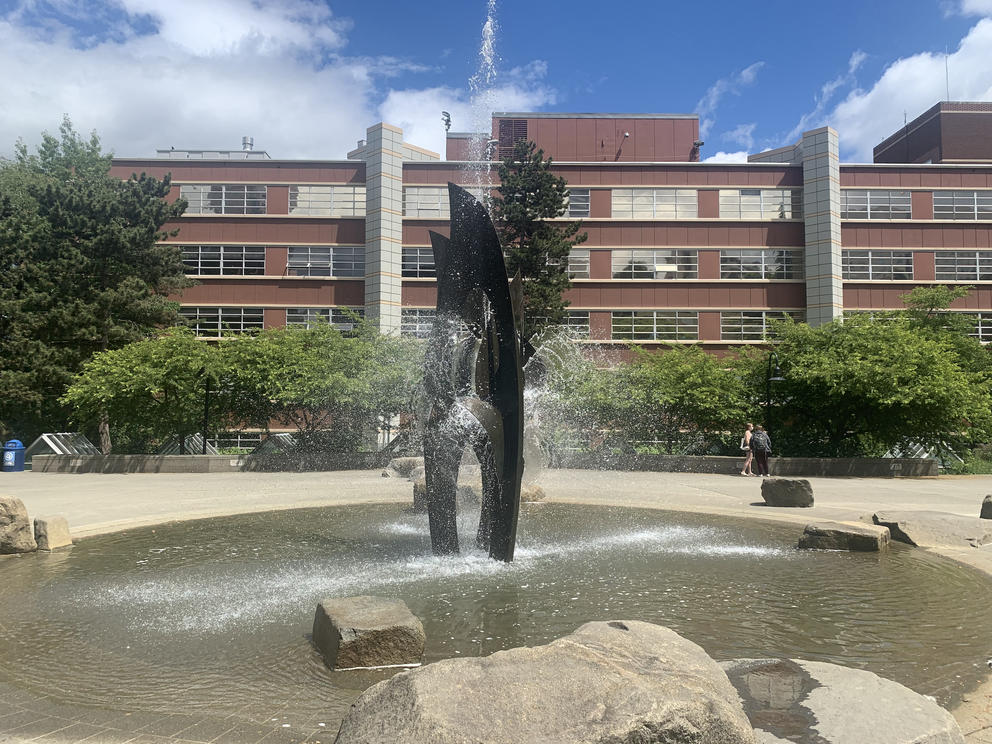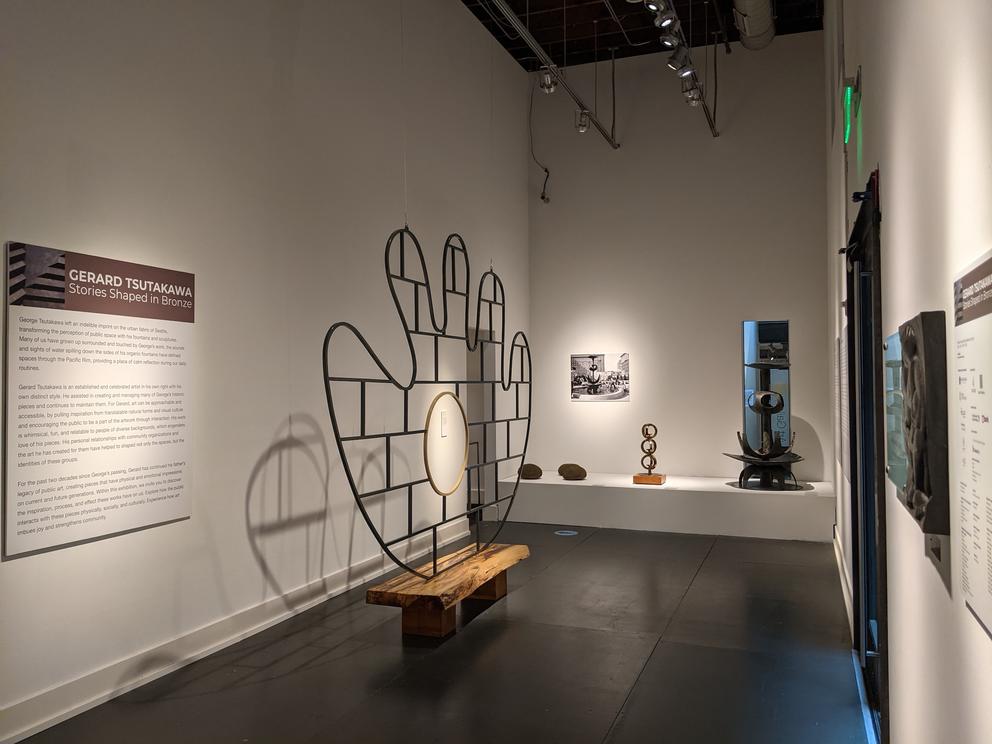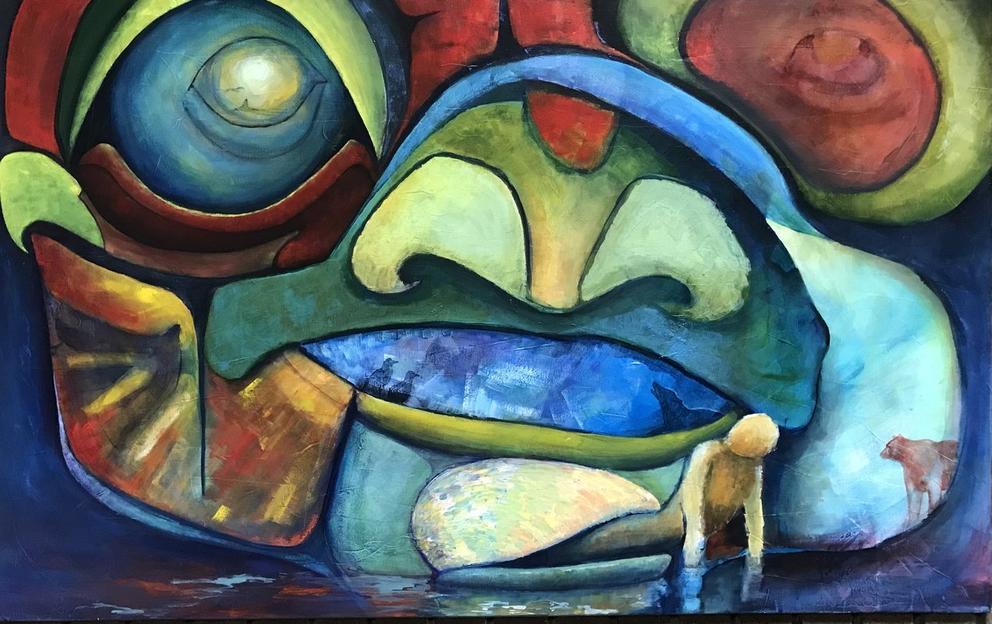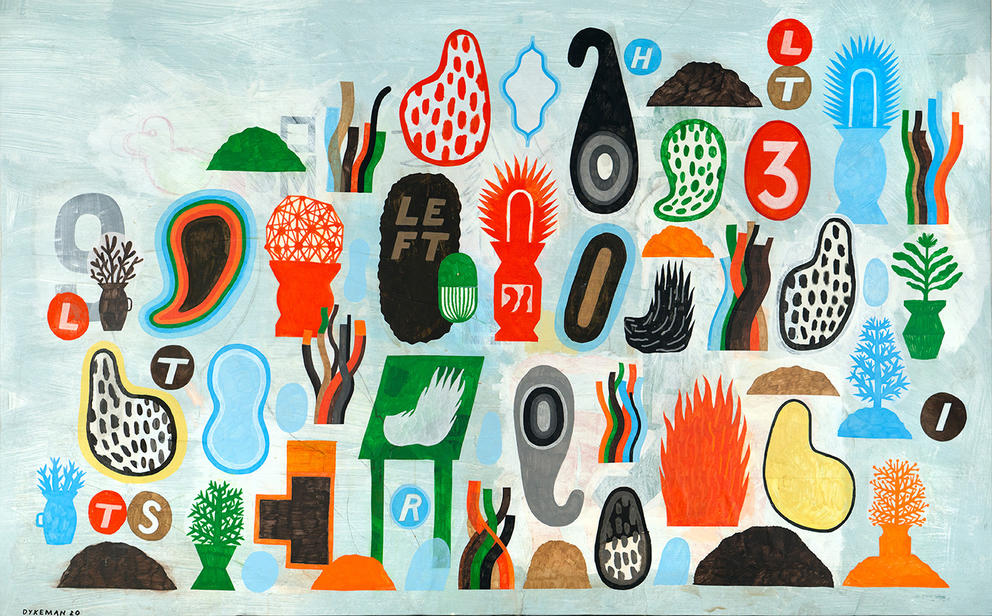A guiding force in American glassblowing, Moore taught at Pilchuck for many years, brought in Italian master glassmakers to expand the program, and influenced legions of artists (including local glass stars Preston Singletary and Dante Marioni) by way of his own studio.
I interviewed him just once, for a story I wrote in Seattle magazine nearly 10 years ago, “How Seattle Became the Epicenter of Glass Art.”
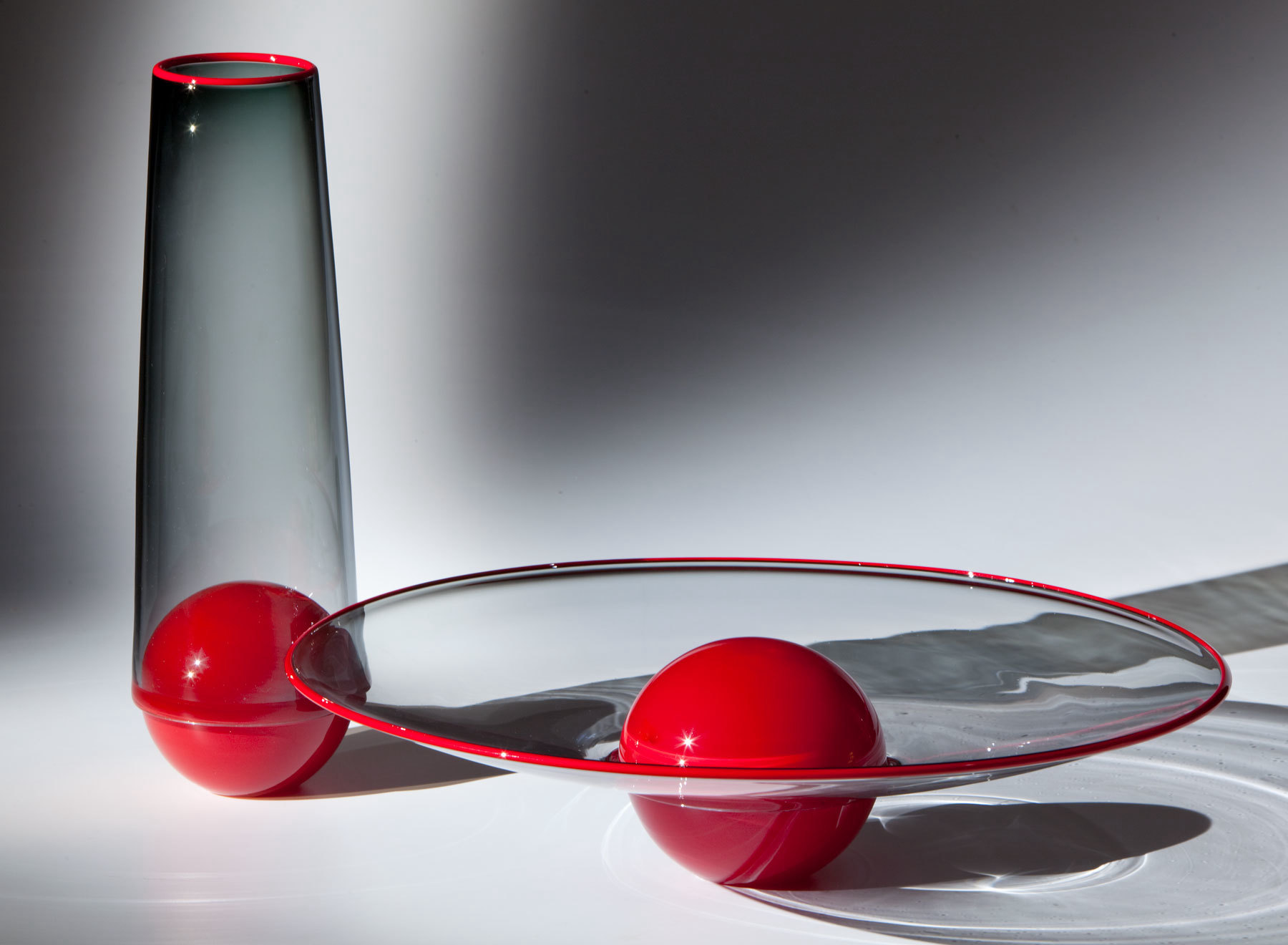
I remember being nervous about calling this giant of glass — Moore loomed in my mind as a VIP, who along with Dale Chihuly (his mentor) helped shape the U.S. studio glass movement. His artistic style is geometrically flawless — all spheres, rings and cylinders, with solid colors suspended as if in water, or in orbit. But on the phone, he immediately put me at ease with his kindness and a funny comment I no longer recall, though I do remember the relief of laughing.
ArtSEA: Notes on Northwest Culture is Crosscut’s weekly arts & culture newsletter.
When I interviewed Debora Moore, his wife and fellow glass artist, for a 2019 Crosscut story about her own beautiful work, I thought maybe I would finally meet Benjamin (“Benny,” as his community knew him) in person, at the studio and hot shop the two shared for decades in the Chinatown-International District. Turned out he wasn’t around that day, but his work on display spoke for itself, its quiet purity of form a kind of humming meditation.
I’m starting to think of this season as Tsutakawa summer, since I keep bumping into work by the Northwest arts family everywhere I go. Last month, while checking out Seattle University’s self-guided campus art walk, I basked in the cool spray of George Tsutakawa’s “Centennial Fountain” (1989), a graceful, leaflike centerpiece on the quad. The next weekend, while racing to catch a ferry to Bainbridge, I paused next to his “Fountain of Wisdom” (1957), which stands in front of the Downtown Public Library and beckons with midcentury mod appeal.
Next, on a drive past T-Mobile Park, I noted the cartoony humor of George’s son Gerard Tsutakawa’s “The MITT” (1999), forever doomed — by the deliberate hole in the palm — to drop the ball. And last weekend, while wandering around Port Townsend, I encountered yet another of Gerard’s works, “Salish Sea Circle” (2011), whose chunky fluidity seemed especially sought out by seagulls.
You can have your own Tsutakawa summer, thanks to a nifty new self-guided walking tour created by The Wing Luke Museum, which maps the Tsutakawa legacy of sculptures like planets orbiting the museum. Not included is George’s grandson Kenzan Tsutakawa-Chinn’s lovely LED installation, “Gather” (2020), which hangs softly over the Garden Court at the Seattle Asian Art Museum. Nor is Gerard’s forthcoming piece “Sea Wave,” which will soon join the Kraken at Climate Pledge Arena. Also missing: the strikingly organic “Memorial Gates” (1976) at the Washington Park Arboretum, designed by George, fabricated by Gerard and stolen in 2020.
But there’s still plenty to see on the walking tour, which is part of The Wing’s new retrospective, Gerard Tsutakawa: Stories Shaped in Bronze (through April 17, 2022). The exhibit traces the family’s history and artmaking process, showcasing the early drawings and models Gerard used to plan out works like “The MITT” and “TONBI Fountain,” his accordionlike sculpture near the Amazon Spheres. Also on view — since 2008 — are the long, wavy handles Gerard designed for The Wing’s front doors. They’ve now been replicated into jewelry (visit the gift shop), so you can always have a Tsutakawa close at hand.
If you’re looking to get back into art-walking shape, now is the moment. For the first time since the pandemic, Ballard Art Walk returns (July 10, 6-9 p.m.), with shows including colorful abstract paintings by Seattle’s Laura VanHorne at Horseshoe, and at Market Street Shoes, paintings by Frank Peterson, whose bold figural works reflect his Makah heritage.
Another reason to hit the Ballard Art Walk: the grand opening of Sacred Circle Art Gallery on old Ballard Avenue (July 10, 1-7 p.m.). This marks the third retail location for Sacred Circle, which is run by the Northwest-based United Indians of All Tribes and has gift shops at the Daybreak Star Indian Cultural Center and the Seattle-Tacoma International Airport. The Ballard location will stock a similar mix of clothing, jewelry and accessories designed by Native craftspeople, and will also host rotating gallery shows. The first featured artist is Jennifer Angaiak Wood (aka “Yup’ik Jen”), who augments her Native Alaskan mask-carving tradition with contemporary influences.
Across the city, Georgetown Art Attack (July 10, 1-7 p.m.) is also back in full force. Among the cool shows: Time Will No Longer Tell (at Studio E Gallery through July 17), by longtime Seattle painter Warren Dykeman, whose large-scale, graphic tableaus are imbued with text, humor, clompy shoes and mysterious messaging; New Space, a group show of intriguing new works at the new location of Koplin Del Rio Gallery (through July 24); a Summer Salon of art and craft at Housewright Gallery (through Aug. 28); and at Fantagraphics, the seventh annual “Hot Off the Press” book fair (July 10, 5-9 p.m.), featuring zines, comix and small press books, including from the COVID-canceled Short Run Comix & Arts Festival.
Did you want to get outta Seattle? Consider: the grand opening festivities (July 10 at 10 a.m.) and Puyallup Tribe cedar blessing for the “Ghost Log” on the Tacoma waterfront, by artist Mary Coss (which I wrote about back in May); or the inaugural Summer Art Market on the plaza outside the Bainbridge Island Museum of Art (Sundays July 11-Aug. 15, 11 a.m.-5 p.m.); or, even farther flung, the fifth annual Walla Walla Movie Crush (July 9-11), a slew of fresh short films screened in the Gesa Power House Theatre. In short: Northwest arts are rolling onward.
Get the latest in local arts and culture
This weekly newsletter brings arts news and cultural events straight to your inbox.

